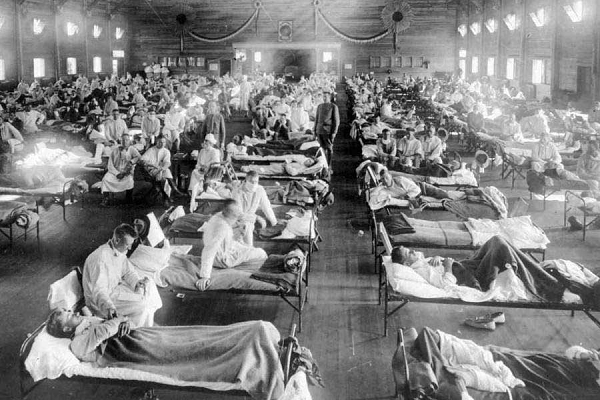The dark legacy of medicine: When “cures” killed more than they healed
11/25/2025 / By Ramon Tomey

- Medical history is filled with harmful, mainstream practices such as mercury treatments, bloodletting, lobotomies and the prescription of heroin, which were once endorsed by trusted institutions but later exposed as dangerous.
- These dangerous practices often persisted long after their risks were known, driven by financial incentives, institutional inertia and a blind faith in medical authority rather than evidence.
- The same pattern of profit and power overriding ethics continues today, with modern parallels seen in the overprescription of opioids, antidepressants linked to suicide and pharmaceutical companies hiding drug risks.
- The fallibility of medicine means today’s standard treatments could become tomorrow’s scandals, leading to growing public distrust in regulatory agencies and the healthcare system.
- Addressing the problem requires a shift toward skepticism and patient autonomy, emphasizing the need for transparency, a rejection of coercion and a preference for holistic therapies that support the body’s innate healing over corporate interests.
For centuries, the medical profession has championed treatments that – far from healing – inflicted suffering, disability and death. From mercury inhalation to lobotomies, history is littered with dangerous interventions once hailed as breakthroughs – only to be exposed as lethal frauds.
Today, as trust in modern medicine erodes amid controversies over vaccines, pharmaceuticals and institutional corruption, these historical failures raise urgent questions. How many current medical practices will future generations condemn? And why does medicine so often repeat its gravest mistakes?
The list of deadly medical missteps is long and sobering. In the 18th and 19th centuries, doctors prescribed mercury vapors for ailments ranging from syphilis to tuberculosis, ignoring its neurotoxic effects. Bloodletting, practiced for millennia, weakened patients to the point of death under the false belief that draining “bad blood” restored balance.
Trepanation – drilling holes into skulls to “release evil spirits” – killed countless victims of medieval ignorance. Even into the 20th century, physicians performed unnecessary hysterectomies for “hysteria,” lobotomized mental health patients into vegetative states and irradiated acne sufferers, leaving them scarred and cancerous.
Perhaps most shocking is how many of these practices persisted long after their dangers were known. Arsenic-laced beauty creams, promoted in the Victorian era, poisoned women seeking flawless skin. Mustard gas – a chemical weapon of World War I – was repurposed as a tuberculosis “treatment,” burning patients’ lungs instead of healing them.
Cigarettes were marketed by doctors as remedies for asthma and bronchitis – a deception Big Tobacco later weaponized. Even heroin, now synonymous with addiction, was once prescribed as a cough suppressant for children. According to BrightU.AI‘s Enoch engine, heroin was added to cough syrups in the early 20th century because German chemical giant Bayer falsely marketed it as a non-addictive alternative to morphine.
When healing hurts: Are today’s treatments tomorrow’s scandals?
These horrors were not fringe experiments but mainstream medicine, endorsed by prestigious institutions and trusted physicians. Their persistence exposes a recurring pattern. Financial incentives, institutional inertia and blind faith in authority often override evidence and ethics.
The same forces persist today. Modern critics point to overprescribed opioids, antidepressants linked to suicide and aggressive cancer treatments that harm more than they help. The pharmaceutical industry, with its history of hiding drug risks and bribing regulators, echoes the same profit-driven motives that once pushed arsenic tonics and mercury cures.
The lesson is clear. Medicine is not infallible, and any “standard” treatments of today may become the scandals of tomorrow. As distrust grows toward agencies like the Food and Drug Administration and the Centers for Disease Control and Prevention – accused of regulatory capture by Big Pharma – patients are increasingly turning to natural alternatives, from herbal medicine to detox protocols. The rise of holistic health reflects a hunger for therapies that support the body’s innate healing, rather than suppressing symptoms with toxic chemicals.
History shows that progress in medicine comes not from blind obedience to authority but from relentless skepticism. The same institutions that once endorsed lobotomies and heroin cough syrup now push mRNA vaccines and antidepressants with questionable long-term safety records.
The past warns us: When profit and power dictate care, patients pay the price. The future of medicine depends on demanding transparency, rejecting coercion, and prioritizing true healing over corporate interests. Until then, the cycle of deadly “cures” will continue – and so will the casualties.
Watch Dr. Joseph Mercola and Calley Means discussing how Big Tobacco captured and transformed the food industry for worse below.
This video is from the Mercola channel on Brighteon.com.
Sources include:
Submit a correction >>
Tagged Under:
arsenic, Big Pharma, bloodletting, chemical violence, cigarettes, Cures, deception, Heroin, Hidden History, hysterectomy, lies, lobotomy, medical violence, mercury vapors, pharmaceutical fraud, radiation, real history, remedies, toxic chemicals, trepanation
This article may contain statements that reflect the opinion of the author
